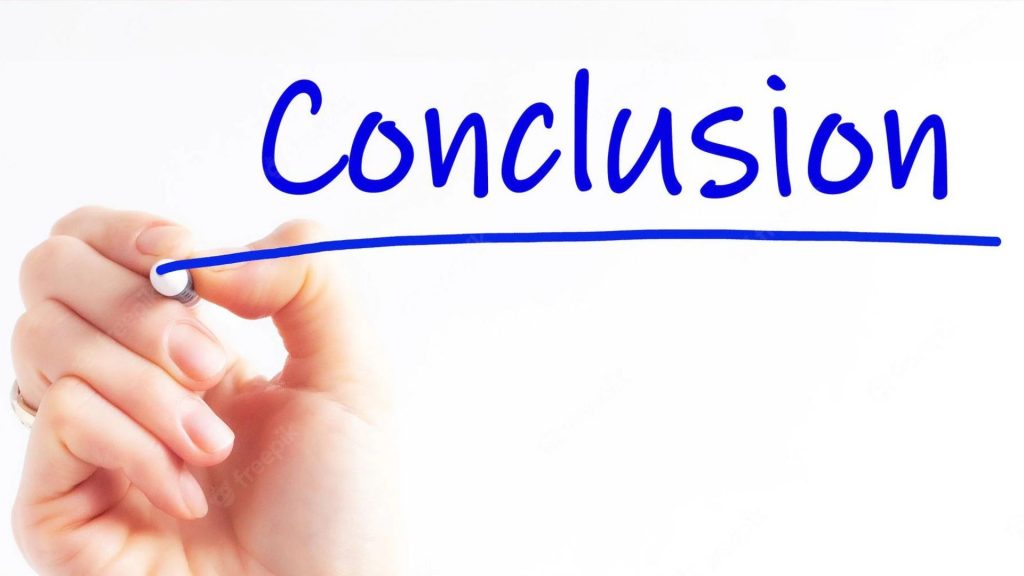Conclusion and communication. The panel is charged with making factual findings. It is critical that the panel concludes its investigation and report with clear findings or a conclusion that the evidence did not allow the panel to make factual findings. These conclusions must be based on the evidence discovered by the panel during its investigation: documents, statements, and so on. The investigation report must explain how the panel arrived at its conclusions.
Conclusion And Communication
The conclusion is the most important part of the report. It is a summary paragraph, about half a page. It must be written after the completion of the data collection and analysis, written as the last piece, and attached after data tables and graphs.
How To Write A Conclusion?
The conclusion should present unique things for the investigation that can be accomplished by including values of the experimentally determined physical quantities. The conclusion cannot be written without the completion of investigations.
The conclusion may start by re-stating the purpose with appropriate changes. It should then briefly state how the data was collected and conducted in the experiment. It should be followed by a summary of results, referring to the data tables and graphs where appropriate, and answering the purpose. A conclusion may also discuss some of the difficulties faced, errors and their possible causes, and suggestions for improvement. Whatever thought process was followed to arrive at the stated conclusion should be explained as completely as possible.
Careful Communication
Once all the findings are formulated, careful consideration should be given to the content, form, and delivery of the report. A good report should provide closure to the investigation with clear outcomes and get normalcy back to the workplace.
Good communication will inform the complainant about the outcome of the investigation and the actions taken. Where the complainant expresses doubts or reservations, those must be resolved by explaining that the situation will be monitored continuously. Where the proposed solution does not work as envisioned, it will be replaced with an alternate one.
Suppose the findings do not substantiate the complaint. In that case, the discussion should move to the next steps, the company’s continued commitment to its internal policies, and its willingness to resolve concerns quickly and decisively.
It will also inform the accused of the outcome of the investigation. If the findings result in a complaint, the results of the investigation and the corrective action and discipline imposed should be communicated accordingly. While it may not be advisable to share the full details of the investigation, the findings should be briefly summarized and why particular conclusions were reached.
If the investigation does not sustain the complaint, the communication should be more than just that fact. It should also caution the accused against any form of retaliation. For example, the accused may have participated in inappropriate activity, but the investigation did not uncover sufficient evidence to support this finding; therefore, the accused should be warned that the complainant’s stated facts, if true, would have violated company policy. Confirmation that such conduct is against the company’s policies and that the accused will continue to adhere to the policies should also be sought.
Where the investigation reveals that the complaint was false and without merit, the said fact should be appropriately disclosed to the accused without divulging much detail. It may still be worthwhile to reinforce the adherence to the company’s policies and a zero-tolerance threshold.
Finally, it will also inform other parties involved. Normally, it includes the management, other employees involved in the investigation, and any regulatory or external parties as appropriate. Generally, where the communication is not required by law, it should be concise and not be left open to interpretation to avoid negative speculation. It is advisable to communicate the minimum necessary details to avoid potentially harmful speculation.
Final Thoughts
After you’ve finished conducting interviews, reviewing documents and materials, and reviewing policies, the next step is to organize and analyze the investigative materials. Notes, witness statements, documents, e-mails, policies, and personnel records are all examples.
Reread them and compare them to any gut feelings you may have. Play the role of the devil’s advocate with yourself. Make certain that your left-brain analysis of the materials supports your right-brain bias. Then proceed to draw your conclusions or “fact-finding,” as we say in the business.





